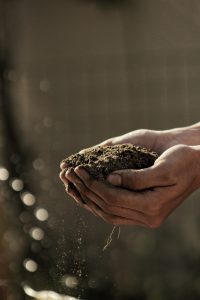4 ways to help nature in your garden this autumn
Welcome to Keats’s, “season of mists and mellow fruitfulness”: early autumn chills on hazy mornings, the smell of nature’s seasonal perfume of mulching vegetation and the first crunchy leaves underfoot. But, before succumbing to the hibernation urge, there are a few of things you can do to help nature survive the coming winter. Don’t worry about doing too much though—less work equals more wildlife in your garden.
1. Don’t over-tidy your autumn garden
At this time of year, it’s important to avoid the urge to cut back and tidy too much—it’s more beneficial for nature to leave any decaying plants intact, as they create a cozy layer for garden mammals and insects to snuggle down in when winter hits. Hollowed stems and seed heads also provide a safe insect hideaway holes from frosts.
If you have any dead wood in your autumn garden, or if you’re already sweeping up rust coloured leaves, gather them into a pile in a corner of your green space—again insects and small mammals, including our struggling hedgehogs, will thank you for creating a snug home for them.
 2. Let ivy thrive
2. Let ivy thrive
Ivy is one of the best plants for your garden wildlife all year round, but especially during autumn and winter. Whereas most nectar-rich plants are starting to die off, ivy flowers are only just beginning to blossom, providing a vital late source of food for bees, butterflies and other pollinators. Ivy’s evergreen leaves offer crucial shelter for birds and insects even throughout the colder months, when other natural cover is thinning out.
And don’t forget ivy’s ripe, winter jewels—its berries. These are a crucial, calorie-rich source of food for your feathered garden friends, just when they need that extra energy hit to enable them to maintain their body temperatures. If you do one thing this autumn, nurture your garden ivy—and if you don’t have one, plant one!
 3. Don’t be fooled by disappearing birds
3. Don’t be fooled by disappearing birds
During September, you may worry where your much-loved garden birds have gone as the well-stocked feeders lay unattended. But fear not, this is a totally natural occurrence at the beginning of autumn. Nature’s hedgerows are now studded with blackberries and other fruit—all delicious to garden birds. Birds will always favour feeding directly from nature’s pantry, so whilst her stocks are bountiful you will naturally see a drop in garden feeder visitations.
However, keep their food and water sources topped up, because as soon as temperatures drop and the berry crop dwindles, your favourite garden birds will be back to your feeders in abundance. They rely on your high-energy, high-fat winter food to fuel them through the colder months.
 4. Look out for unexpected house guests
4. Look out for unexpected house guests
In the lead-up to winter you may spot either a small tortoiseshell or peacock butterfly perched on the wall in a corner of a room in your house, unmoving—having entered their winter dormant stage. But as temperatures continue to drop outside and our central heating is turned on, these butterflies can be woken up too early by the increased temperatures, which fool them into thinking spring has sprung early.
This isn’t a good thing for a butterfly as their outside environment is too cold and offers little nectar for them to eat. If you spot an early rising butterfly in your home, catch the butterfly carefully and move it to an unheated room or outdoor building which it can easily escape from in the spring.
Source: Positive News 4 ways to help nature in your garden this autumn
Images: Annie Spratt – Gabriel Jimenez
Become an agent of change by contributing to the development of Global Goodness
Global Goodness is a non-profit organization.
All our costs are met by donations we receive from our users. If you enjoy positive news, please donate to support us.
Mobile Transfer
Contact name: Global Goodness
Email: donations@globalgoodness.ca
Mobile: (514) 966 4544
Bank Transfer

SWIFT: CCDQCAMM
Branch: 815—Transit: 3019—Account: 815 30197 891267
Beneficiary Name: Global Goodness
Beneficiary address: 4543 Fabre, Montreal, QC, H2J 3V7





